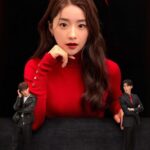Villain Protagonist Sequels.: When Bad Guys Become the protagonist | popgeeks.com
Understanding Villain Protagonist Sequels: A Cinematic Trope
The concept of villain protagonist sequels or face turn is a fascinating one, and several films have successfully explored this territory. The landscape of cinema is constantly shifting, and one of the most intriguing transformations we’ve witnessed is the evolution of iconic villains into unlikely protagonists. This trend is particularly evident in villain protagonist sequels, which offer a unique canvas to explore the complexities of these characters, often accompanied by a fascinating genre shift that further enhances their transformation. From relentless killing machines suddenly developing a soft spot to terrifying antagonists becoming the lesser of two evils, these films dare to flip the script and deliver narratives that are as surprising as they are compelling.
Let’s delve into some notable examples of compelling villain protagonist sequels.
From Hunter to Protector: The Terminator 2 Transformation
The original Terminator was a masterclass in suspense, a relentless horror-infused sci-fi slasher where Sarah Connor was hunted by the seemingly unstoppable T-800. However, one of the most iconic villain protagonist sequels arrived with Terminator 2: Judgment Day. Here, the same model of Terminator, but reprogrammed, becomes the protector. This shift from relentless hunter to guardian is a defining characteristic of many successful villain protagonist sequels. The genre also shifts, moving towards a full-blown sci-fi action thriller.
A Morally Grey Guardian in Don’t Breathe 2
In Don’t Breathe, the Blind Man was a terrifying horror villain. The sequel, another example of villain protagonist sequels, controversially places him in the role of protector. While his past actions are monstrous, the narrative forces us to see him in a new light, even if it’s a morally ambiguous one. This exploration of flawed protagonists is a common thread in villain protagonist sequels.
Esther’s Twisted Journey in Orphan: First Kill
The original Orphan presented Esther as a shocking and manipulative villain. The prequel, Orphan: First Kill, serves as an origin story, making it a unique entry in the realm of villain protagonist sequels. While she remains the central antagonist, the film’s perspective and the introduction of even more twisted characters subtly shift our focus, making us almost root for her survival in this unusual example of villain protagonist sequels.
Could M3GAN Be the Unlikely Hero of Her Sequel?
The first M3GAN established the doll as a lethal, tech-horror villain. The upcoming M3GAN 2.0 has the potential to be another fascinating example of villain protagonist sequels. With the introduction of a potentially greater AI threat, M3GAN might find herself in an unlikely protective role, shifting the genre towards more AI-driven action.
Godzilla’s Evolution: From Destroyer to Earth’s Defender
The development of Godzilla is arguably the most iconic illustration of villain protagonist sequels. In many sequels, Godzilla has mostly changed from his first appearance as a terrible force of destruction to a protector of Earth. The possibility for intricate character arcs in villain protagonist sequels is highlighted by this protracted metamorphosis.
These instances show how a villain’s transformation into a protagonist, frequently coupled with an intriguing genre change, can result in engrossing cinematic experiences. In addition to providing new insights on well-known characters, villain protagonist sequels question our conceptions of virtue and evil.



